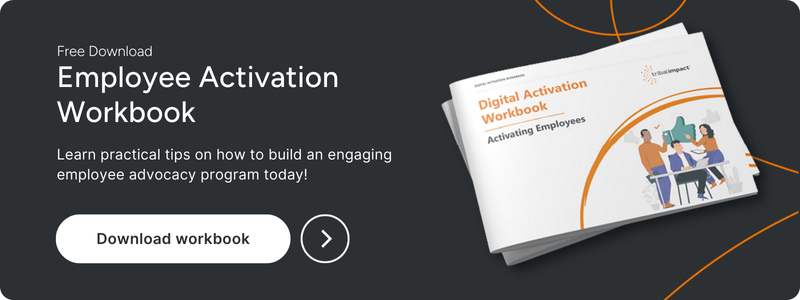In one of our recent Lives, Tribal Chief Sarah Goodall spoke to Ryan Bares, Global Influencer Marketing Lead at IBM, about employees becoming influencers within the IT industry.
According to Edelman in 2021, “64% of B2B buyers expect a more human, less formal tone of voice and 67% want to see an identifiable author attributed to thought leadership content.” One way you can achieve this is by activating your experts and turning them into influencers.
You can watch the full interview here, listen to the recording on our podcast, or check out the summary of what they discussed below.
Is It Hard To Get Technical Experts On Social?
Some people will always be more enthusiastic than others about being active on social media. It can help to show them the value of it their personal brand, as well as the company’s brand. This allows them to see it as more than just another marketing technique, and instead as something that can make a real difference to all areas of the business.
In Ryan’s experience, employees get excited about helping the company and discussing what they’re interested in on social media. However, when they realise that success takes a consistent habit, sometimes that enthusiasm can fade. It’s therefore important to find what suits them the best, whether that’s podcasting, video content, or written content.
LinkedIn can be a great starting point, as most professionals already have a profile. That makes it easier to convince them to engage with their peers and share thought leadership content on there. Other platforms can have a lot of noise, so gaining traction and standing out can be more difficult.
How Do You Find Employees Who Are Ready To Become Influencers?
Ryan and his team look for employees who are active on social media, talking about topics they care about, and who meet certain criteria. They then reach out to the employee(s) to see if they’d like to get involved.
Leadership also sometimes put out a message to relevant groups, explaining that they have a new initiative with marketing and communications, and employees can raise their hand if they want to take part.
In Ryan’s experience, it’s rare to have people knock on the door wanting to be active on social. Most of their advocates come from outreach. He then builds a group that can scale and go through the training.
It takes time to grow an audience; you can’t flip a switch and suddenly have great brand ambassadors. Training is a long-term thing that involves building employees’ habits so that they can be smart on social and show up in the right way.
The Challenges Of Employees As Influencers
The biggest challenge when it comes to turning employees into influencers is time. Employees often start out enthusiastic until they discover how much work is involved. Ryan recommends Tribal’s coffee cup routine as a solution to this.
There’s also the pressure of what to say on social media. It can sometimes be a polarising place, which makes some employees more hesitant to show up.
“We don’t expect them to talk about the brand. Talk about what you are passionate about, what’s happening, what’s trending within the market. Be authentic . You have a unique point of view.”
Internal influencers aren’t just another marketer, they’re someone with a lot to say about the things the company cares about. They’re also the people involved in the building process, so they have a unique point of view that outsiders want to hear.
Measuring ROI
There are a few different areas that IBM tracks to monitor success. This includes:• Subject matter expert follower growth, are they becoming more active
• Are subject matter experts becoming more engaged with IBM-related posts?
• Speaking engagements
• Writing opportunities for third-party publications
• If posts reach new audiences that we can’t reach through our own channels
They use manual tracking alongside software to help them monitor more traditional metrics, like reach.
Alongside this, they compare what’s happening on their own channels to employees’ posts, which allows them to analyse how different platforms are performing.
Conclusion
It can be challenging to encourage employees to get involved in social media, but once they’ve overcome the barriers of consistent engagement and what to post, their personal brand and influence can have a huge impact on all areas of a business.
If you’d like to watch or listen to the full interview, it’s available here.

